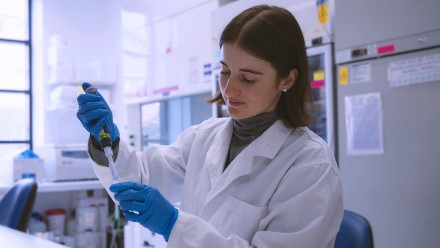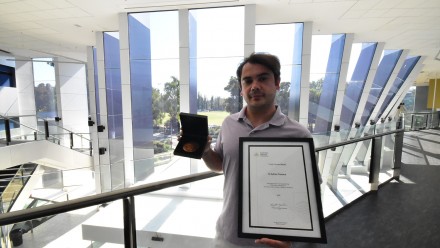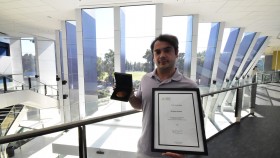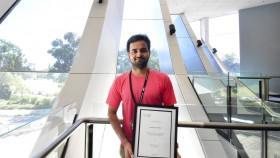No travelling wave? Questioning the fundamentals of hearing
In a broad-ranging paper in the online journal PLOS ONE, an auditory scientist at JCSMR compares two basic theories of how we hear – the old outmoded resonance theory and the current travelling wave theory – and concludes that the theory from 150 years ago might have been prematurely dismissed.
The PLOS ONE paper, by Dr Andrew Bell, a visiting fellow at the School, reevaluates the old resonance theory – which dates back to Hermann von Helmholtz in the middle of the nineteenth century – and finds that, when applied to modern data, the theory can reproduce the same major results as the current travelling wave theory.
Helmholtz had the idea of tiny piano strings in the ear which resonate to incoming sound. The PLOS ONE paper starts with this fundamental idea – translated into a set of tiny pendulums – and shows how, given the correct properties of the pendulums, a travelling wave naturally emerges without hydrodynamics and without the other complications that are usually thought necessary.
The paper shows how the travelling wave theory, which calls for the formation of a wave of stimulation that moves slowly along the sensing surface of the cochlea like a ripple on a pond, can be interpreted more simply as a virtual or phantom wave that appears when a bank of pendulums is set in motion.
The wave produced in such a pendulum system is like a string of chasing lights outside a theatre – there is the appearance of motion, even though nothing actually moves. It is the coordinated pattern of on and off that produces the illusion the lights are moving, and it’s the same with how the tiny strings or pendulums inside the ear coordinate, the paper demonstrates.
The paper, “A resonance approach to cochlear mechanics”, reexamines the cochlea, or inner ear, in terms of first principles.
It is designed to clarify what is meant by a travelling wave, a concept that over the years has created a number of major conceptual difficulties. The paper points to how, using resonance principles, many of these problems can be overcome. Although challenging the conventional outlook, Dr Bell hopes the paper will renew discussion of an issue that has occupied auditory science for a century or more.
“It seems that Helmholtz was on the right track all those years ago”, he says.
Read Dr Bell's paper in PLOS One and a supporting paper (PDF, 2.2MB) in the Journal of Hearing Science and also watch a demonstration of waves in a bank of pendulums.














